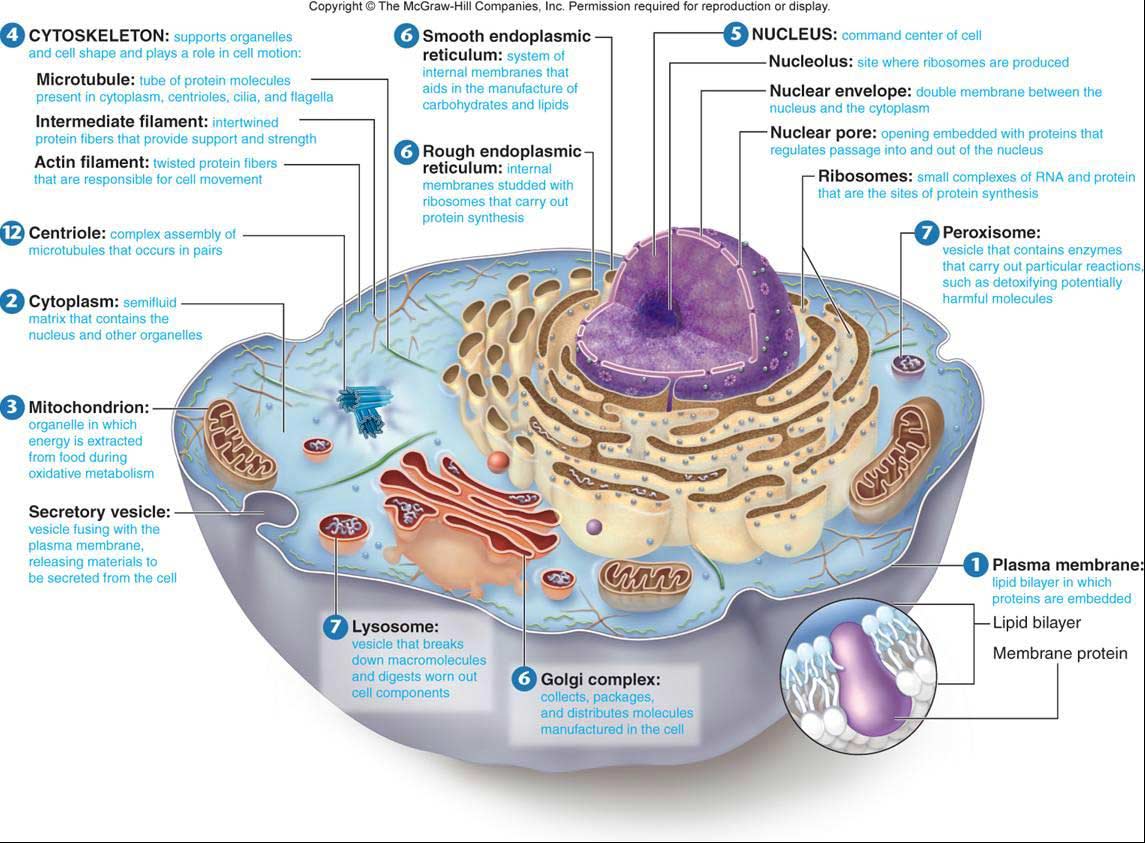Four Kinds of Lysosomes are as follows:
Lysosomes are polymorphic structures and according to present concept as described by De Robertis et al., (1971); this polymorphism is the result of the association of primary lysosomes with the different materials that are phagocytized (literally ‘eaten’) by the cell.
Four Kids of Lysosomes:
Contents
1. Primary lysosome (storage granules):
It is a small sac-like body whose enzymatic contents are synthesized by ribosomes and accumulated in ER. From there, they enter the Golgi region, where acid phosphatase reaction takes place. The GERL region, i.e., acid phosphatase rich region of Golgi maturing face is thought to be involved in the production of lysosomes. The primary lysosome comprises only one type of enzyme or another.
2. Secondary lysosomes (digestive vacuole or heterophagosome):
These are produced either from phagocytosis or pinocytosis of foreign material by the cell. Actually within the cell the foreign bodies or extra-cellular substances are enclosed within the membrane after phagocytosis or pinocytosis and these membrane bound structures are known as phagosomes or pinosomes.
These ultimately fuse with primary lysosomes, thus forming secondary lysosomes. This body having engulfed material within membrane has also full complements of acid hydrolases (hydrolytic enzymes). The digested material of these lysosomes passes through the lysosomal membrane and are incorporated into the cell so that they may be reused in metabolic pathways.
3. Residual bodies:
These are formed if the digestion is incomplete. In some cells, such as the Amoeba and other protozoa, these residual bodies are eliminated by defecation. Hence lysosomes having undigested material or debris are called residual bodies. These bodies are formed due to lack of certain enzymes in lysosomes.
These are rejected from the cell by exocytosis and some time in certain cells these bodies remain in cells for long time causing ageing. These residual bodies also cause diseases in man such as fever, hepatitis, polynephritis, hypertension, congested heart failure, etc. If the debris, mostly lipid in nature, may accumulate and condense into concentric lamellae, it forms myelin figures.
4. Autophagic vacuole (cytolysosome or autophagosome):
It is a special case in which lysosome digests a part of cell (e.g., mitochondria or portions of ER) by the process of autophagy. For example, liver cell shows numerous autophagosomes during starvation among which remnants of mitochondria occur. This is a mechanism by which the cell can achieve degradation of its own constituents without irreparable damage.

